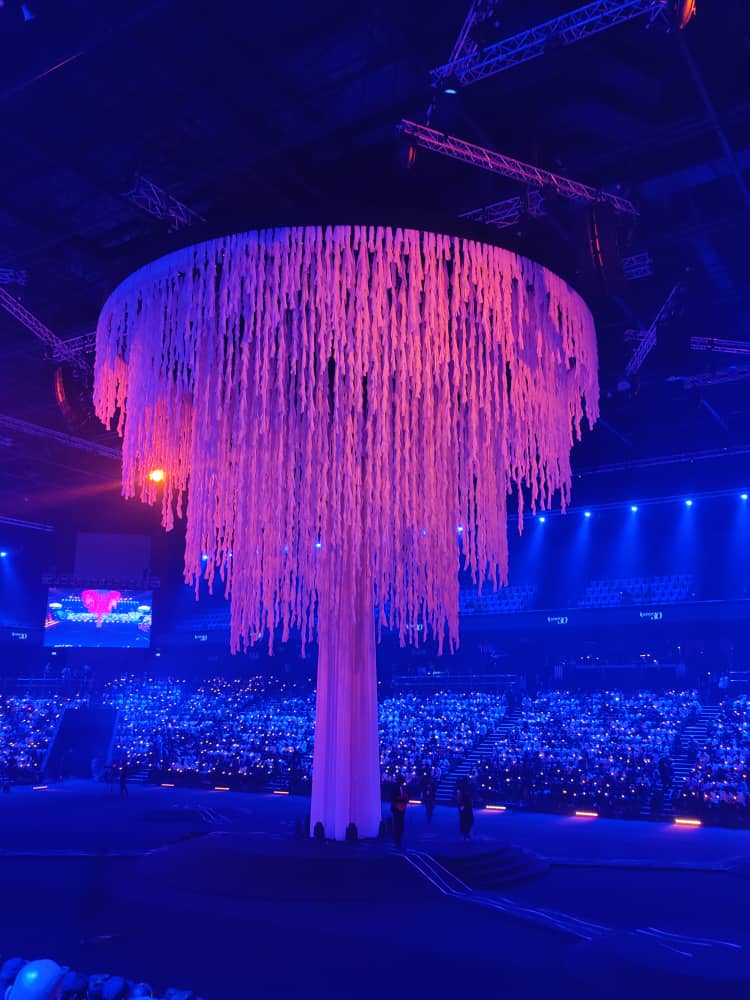 It is the morning of 7th April. In Rwanda that means the beginning of Kwibuka, the commemoration period for the 1994 Genocide Against Tutsi. Kwibuka 2024, of course, marks the 30th remembrance. Kwibuka30, a word that is pregnant with meaning. Looking at how the day begins, thirty years on, one is once again struck by the virtually unbrigeable gulf, between the Rwanda as depicted by its detractors, and the reality of the country.
It is the morning of 7th April. In Rwanda that means the beginning of Kwibuka, the commemoration period for the 1994 Genocide Against Tutsi. Kwibuka 2024, of course, marks the 30th remembrance. Kwibuka30, a word that is pregnant with meaning. Looking at how the day begins, thirty years on, one is once again struck by the virtually unbrigeable gulf, between the Rwanda as depicted by its detractors, and the reality of the country.
The entire nation is involved in the annual Kwibuka period. If you want to go and buy a litre of milk, a loaf of bread, you can, but you shall most likely be the only shopper. And you will find the shop keepers more than a little distracted. They will be looking at their phones, or listening to their radios, tuned into the events taking place at the various commemoration venues.
You will find the normally busy roads, all but empty. You will wait a little longer than normal, if you wish to hail the normally ubiquitous motor cycle taxis. And when you get one, your journey will take unintended diversions, as the police direct you away from the routes that are going to be taken by the many dignitaries, as they arrive to be with Rwanda during the period of mourning.
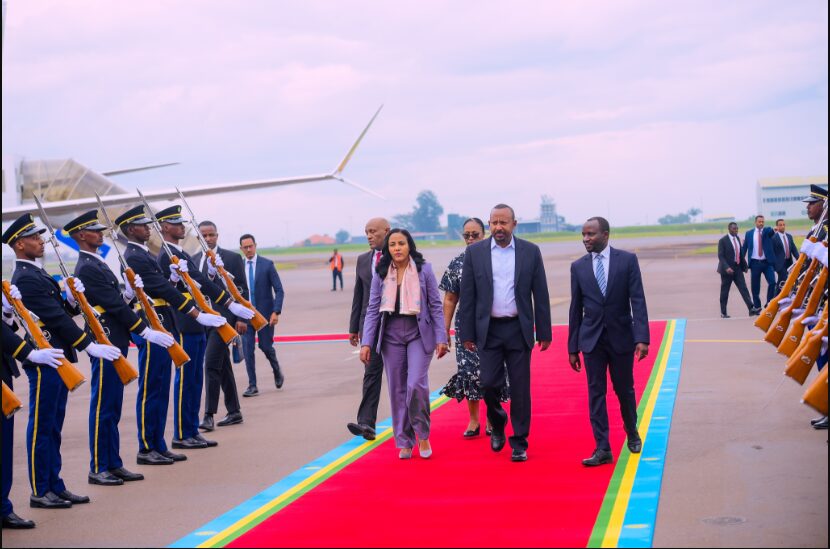
Prime Minister Dr. Abiy Ahmed(Centre) and First Lady arrive for Kwibuka 30
A word or two about the police. As Rwanda’s detractors, whether on social media, in academia and of course, the media would have it, “Rwanda is a police state.” Then, comes the reality. In this “police state”, there is community policing. “You have to walk the rest of the way, I am afraid” says the policeman, adding, “sorry, there is no other way…” as he explains that for the remaining distance to the BK arena, one of the venues for remembrance, the road is closed.
Most police officers in Rwanda, are unarmed, even today, with so many visiting heads of state and other dignitaries to guard. In virtually every other part of the world, including the most advanced nations, security would be visibly heavy. In this supposed Police State however, there are only a few armed police, members of the Anti Terrorism Unit (ATU).
And they are impressively armed, stern, alert, focused. But say good morning, as you walk by, and you get a warm, polite response. Anything else would be unthinkable. As unthinkable as it would be to engage with their equivalent in any other country of the world. That is the nature of Rwanda. A Police State? Perhaps in the detractors’ imagination.
All those obstacles negotiated, you arrive at the BK arena, so called because its management recently secured sponsorship from the Bank of Kigali, locally referred to as BK.
The arena is now world famous, as the home of the first ever Basketball Africa League (BAL) competition, and as a venue for perfomances by local and international artists. Among the celebrated peformers to display their talent under its roof, American rap artist, singer-song writer, Kendric Lamar, Nigerian songtress, Tiwa Savage, and a host of others.
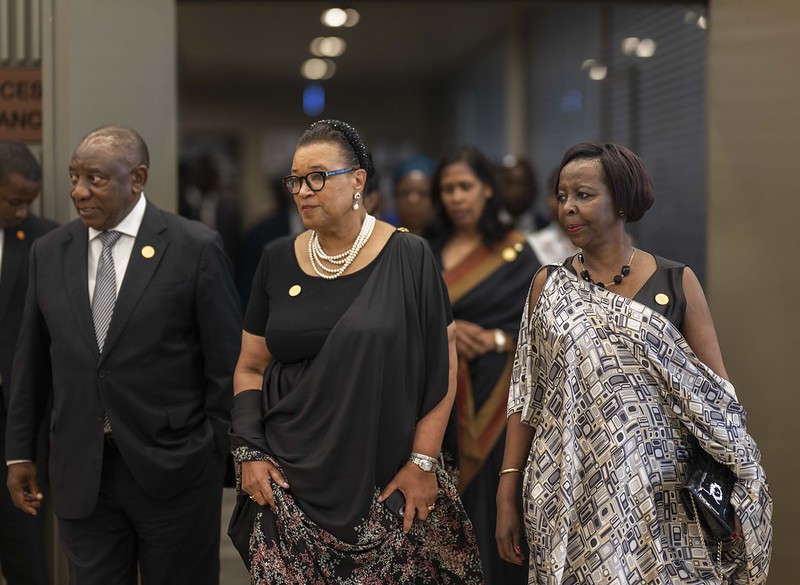
L-R: South African President Cyril Ramaphosa, Commonwealth Secretary General Patricia Scottland and Secretary General of the Francophonie Louise Mushikiwabo
So, important is the arena, as a cultural and sporting venue, that it would now be difficult for Rwandans to imagine their city without it. For the country’s detractors however, the arena alongside the Kigali Convention Centre (KCC), among others, is a “vanity project” a “white elephant.” Never mind that this herd of supposed white elephants, contributes handsomely to the cultural and economic life of the nation.
As you arrive at the arena, you are immediately struck by Rwanda’s other major, but rarely mentioned attributes: organisation and a heartfelt welcoming culture that seems almost innate. Badges supplied earlier are scanned (Rwanda aspires to be an Information Technology [IT] hub), as are any bags the visitor might be carrying. You are hesistant to walk on, waiting for further checks, more questioning. You are afterall going through security checks to an event where several heads of state will be in attendance.
Instead, a polite young man or woman – they are invariably young – ushers you onwards. It is like clockwork. Rwandans and non Rwandans alike, often complain about the speed of service in Rwanda, and it must be said, quite justifiably, but when it works well, it is like closing your eyes, and taking in a beautiful symphony. And at important occasions, Kwibuka, one of the most important, Rwandans do rise to playing the symphony.
There are no arrows pointing you to where you need to go, as you enter the arena, just those innately welcoming young people, an army of them. Once inside, what is normally the basketball court is transformed. At its centre a giant luminescent scupture, in the shape of a tree, made out of white remembrance ribbons. If you have ever wondered what stories trees could tell, this one has much to say.
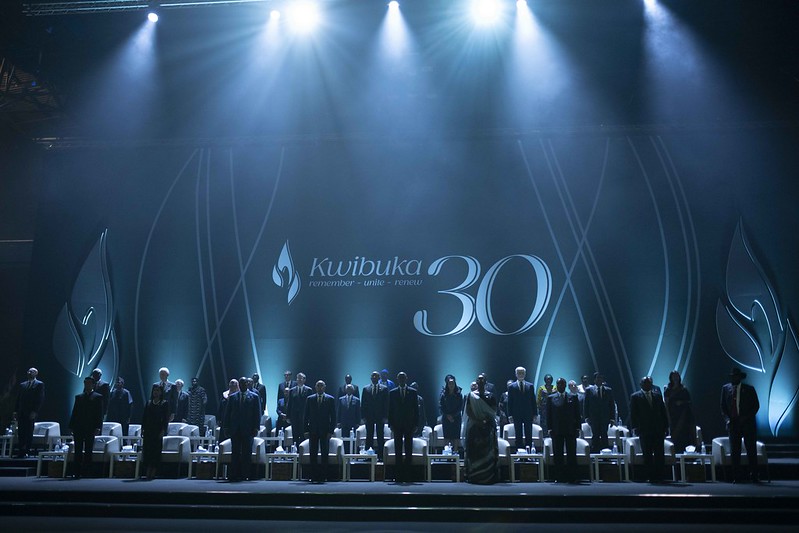
Heads of State and Government observing minute of silence
Its branches speak of the protection of which all Rwandans are now assured, and never afforded to the targeted group, who were to be dehumanised, tortured and then murdered. Its stem and trunk, with the sap that flows within, fuelled by light, is symbolic of the nation’s aspirations, especially as infused within the young. The roots symbolise strength, unity of all Rwandans, nourishing all above, as they come together in national reconstruction.
Exactly as scheduled, the laying of the wreaths and the lighting of the torch of remembrance, at the Gisozi memorial begins. Visiting heads of state and other dignitaries lay the wreaths, with the help of the always impeccably turned out Rwanda Defence Force (RDF) ceremonial guard.
Large screens in the arena link the audience to the ceremony in Gisozi, just over eight kilometres away, as President Kagame, and the first lady, light the torch that will burn for a hundred days.
In around twenty minutes or so, the heads of state, and other notables had left Gisozi, and joined the audience at the arena. Once there, of all the presentations, President Kagame’s key note address stands out, and that includes the beautiful solemn choir, and a moving choreographed performance by a theatre group.
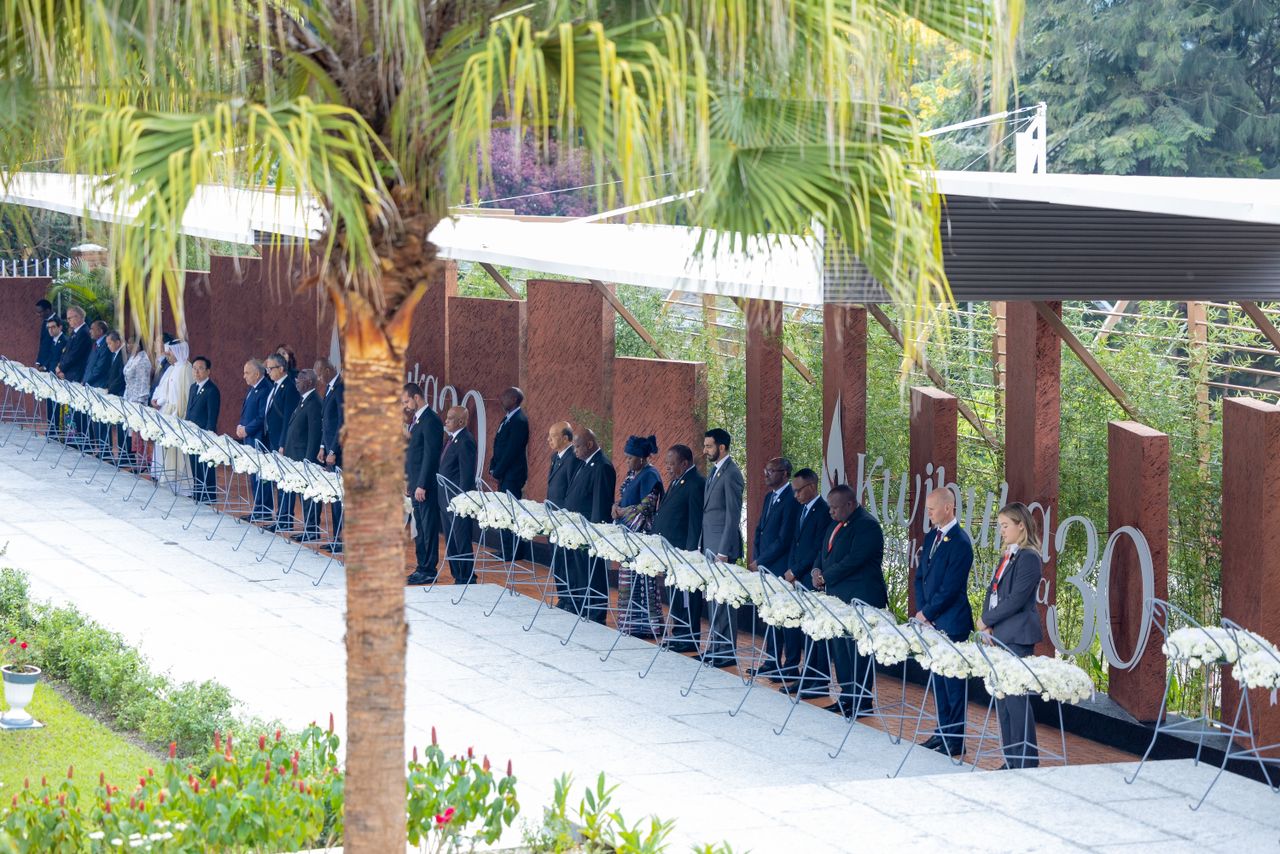
Laying of wreaths at Gisozi memorial
A now traditional ‘Walk to Remember’ would have followed the end of the afternoon’s proceedings in the arena. But much to the disappointment of the gathered multimedia teams from around the world, who were looking forward to attention grabbing pictures, along the the three to four kilometre walk, from the Parliament buildings back to BK arena, rain intervened. The walks, in different parts of the city and the country, will take place, but at a later date.
The idea of a remembrance walk, was conceived by a group of young people in 2008. In several instances during the genocide, notably Nyanza, Kicukiro, the killers marched their victims, long distances, torturing them, before eventually murdering them. The torturous journey along Nyanza Kicukiro, is often appositely compared to the biblical stations of the cross.
The day ended with the night vigil. In Kinyarwanda tradition, when a person suffers a bereavement, the custom is for friends and family of the bereaved, to go their home, build a fire, and sit around it, chatting through night, comforting the bereaved. This can go on for days, for as long as the bereaved needs their presence. The practice is still common today, although it now takes different forms, a development that is reflected in Kwibuka.
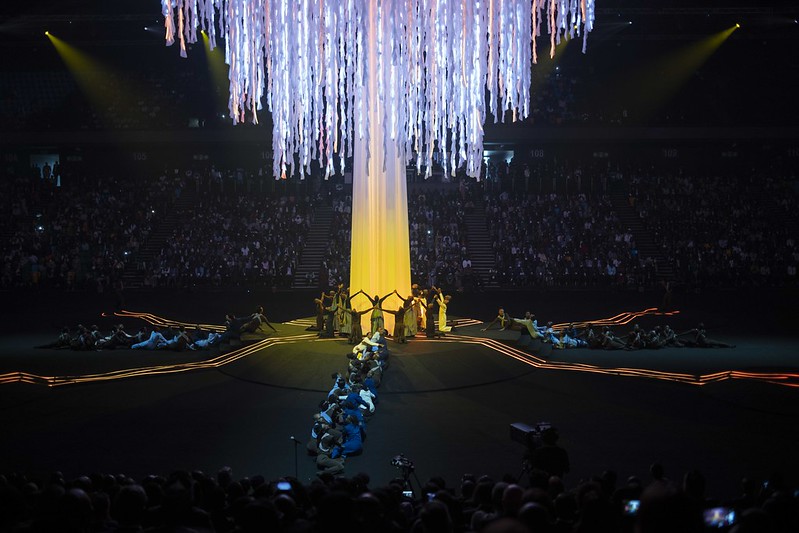
Tree denoting Rwanda’s 30 year development
After liberation in 1994, different such traditional vigils were held informally around the country. As the years passed, they were organised into more formally prepared vigils, enabling the nation to mourn as one.
Just as the BK arena was linked to the ligting of the remembrance torch at Gisozi, so was the entire nation.
The remembrance events will go on for the next hundred days, the period of time it took the killers, to murder the over a million men, women and children. It will culminate in the celebration of life, on 7th July, liberation day, when Rwanda was literally delivered from the hands of mass murderers, and its people could take the right to live for granted, once again.


